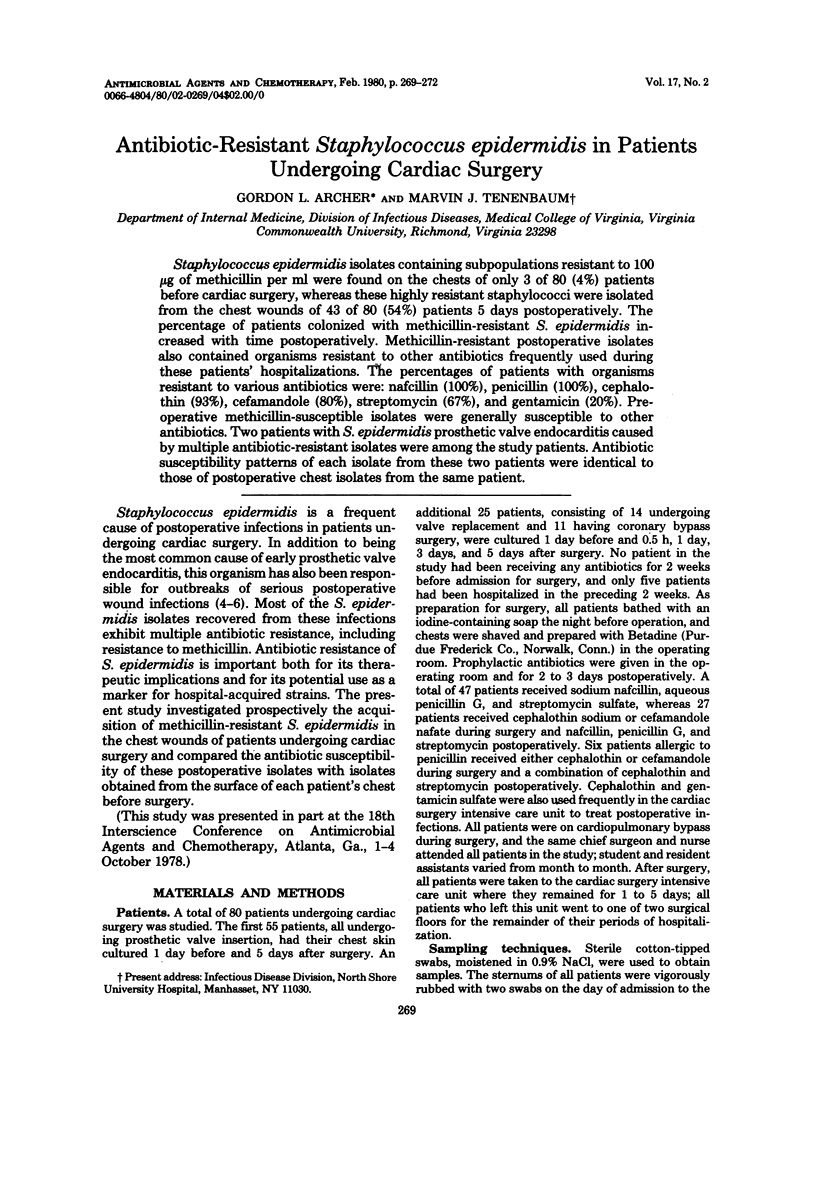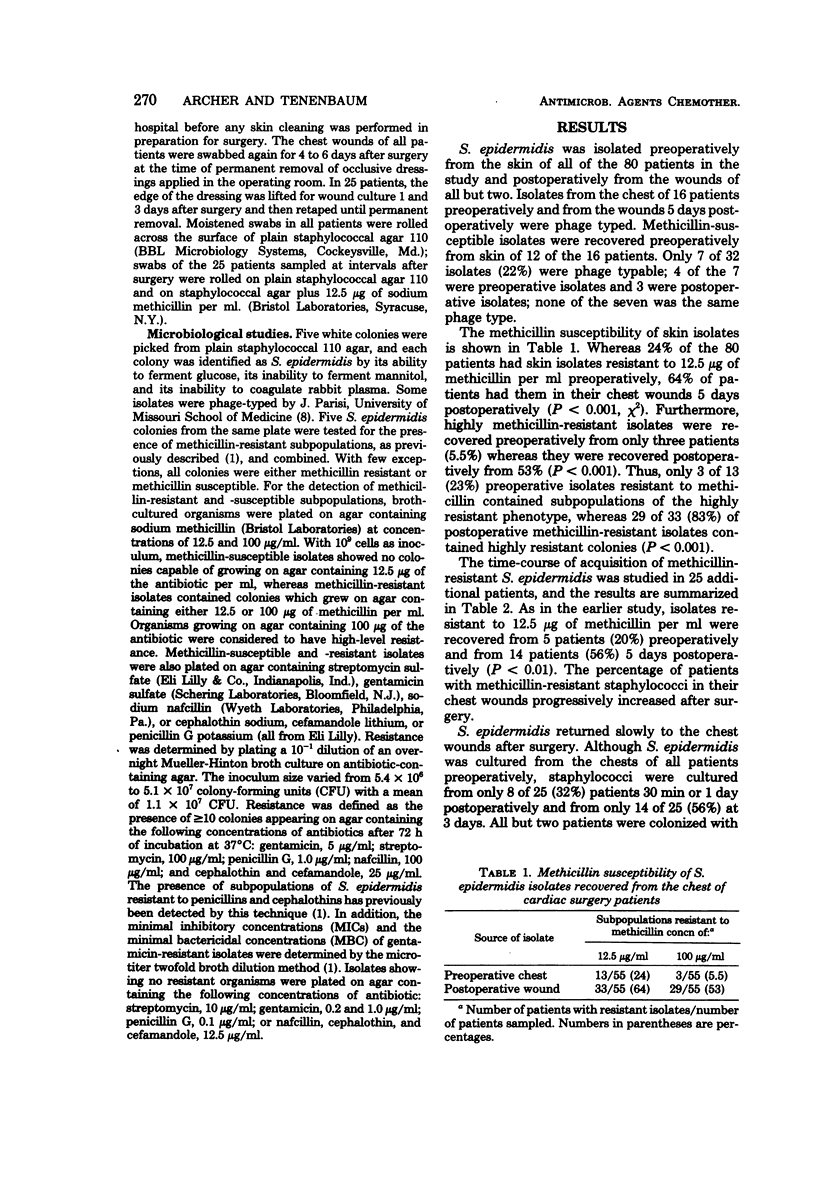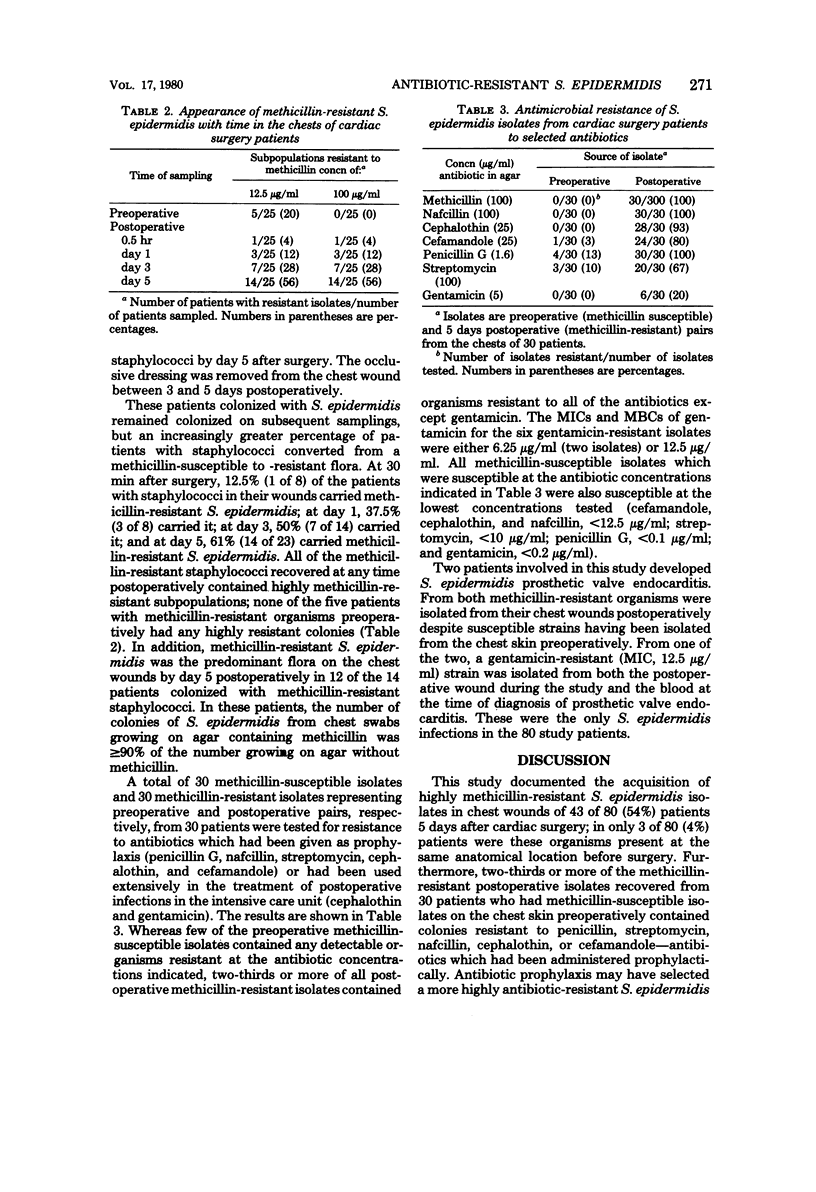Abstract
Staphylococcus epidermidis isolates containing subpopulations resistant to 100 microgram of methicillin per ml were found on the chests of only 3 of 80 (4%) patients before cardiac surgery, whereas these highly resistant staphylococci were isolated from the chest wounds of 43 of 80 (54%) patients 5 days postoperatively. The percentage of patients colonized with methicillin-resistant S. epidermidis increased with time postoperatively. Methicillin-resistant postoperative isolates also contained organisms resistant to other antibiotics frequently used during these patients' hospitalizations. The percentages of patients with organisms resistant to various antibiotics were: nafcillin (100%), penicillin (100%), cephalothin (93%), cefamandole (80%), streptomycin (67%), and gentamicin (20%). Preoperative methicillin-susceptible isolates were generally susceptible to other antibiotics. Two patients with S. epidermidis prosthetic valve endocariditis caused by multiple antibiotic-resistant isolates were among the study patients. Antibiotic susceptibility patterns of each isolate from these two patients were identical to those of postoperative chest isolates from the same patient.
Full text
PDF



Selected References
These references are in PubMed. This may not be the complete list of references from this article.
- Archer G. L. Antimicrobial susceptibility and selection of resistance among Staphylococcus epidermidis isolates recovered from patients with infections of indwelling foreign devices. Antimicrob Agents Chemother. 1978 Sep;14(3):353–359. doi: 10.1128/aac.14.3.353. [DOI] [PMC free article] [PubMed] [Google Scholar]
- Archer G. L., Tenenbaum M. J., Haywood H. B., 3rd Rifampin therapy of Staphylococcus epidermidis. Use in infections from indwelling artificial devices. JAMA. 1978 Aug 25;240(8):751–753. [PubMed] [Google Scholar]
- Bentley D. W. Methicillin resistance in Staphylococcus epidermidis epidemiologic studies. Contrib Microbiol Immunol. 1973;1:650–658. [PubMed] [Google Scholar]
- Blouse L. E., Lathrop G. D., Kolonel L. N., Brockett R. M. Epidemiologic features and phage types associated with nosocomial infections caused by Staphylococcus epidermidis. Zentralbl Bakteriol Orig A. 1978 Jul;241(1):119–135. [PubMed] [Google Scholar]
- Dismukes W. E., Karchmer A. W., Buckley M. J., Austen W. G., Swartz M. N. Prosthetic valve endocarditis. Analysis of 38 cases. Circulation. 1973 Aug;48(2):365–377. doi: 10.1161/01.cir.48.2.365. [DOI] [PubMed] [Google Scholar]
- Marples R. R., Hone R., Notley C. M., Richardson J. F., Crees-Morris J. A. Ivestigation of coagulase-negative staphylococci from infections in surgical patients. Zentralbl Bakteriol Orig A. 1978 Jul;241(1):140–156. [PubMed] [Google Scholar]
- Skahan J. M., Parisi J. T. Development of a bacteriophage-typing set for Staphylococcus epidermidis. J Clin Microbiol. 1977 Jul;6(1):16–18. doi: 10.1128/jcm.6.1.16-18.1977. [DOI] [PMC free article] [PubMed] [Google Scholar]
- Vazquez G. J., Archer G. L. Antibiotic therapy of experimental Staphylococcus epidermidis endocarditis. Antimicrob Agents Chemother. 1980 Feb;17(2):280–285. doi: 10.1128/aac.17.2.280. [DOI] [PMC free article] [PubMed] [Google Scholar]


